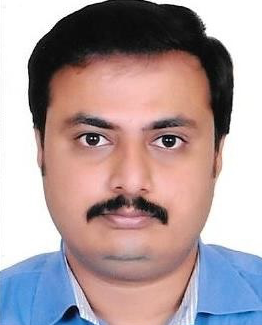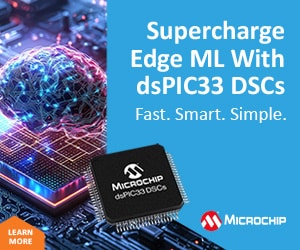Getting to know V3 Novus

Q. What is your organisation’s unique selling proposition (USP) for electronics design?
A. We have team members who have earlier worked in both semiconductor component distribution and embedded design. So our USP is to come up with a solution, keeping in mind both design and price aspects.
Q. Introduce us to your organisation.
A. We work as two major teams, one for hardware design and another for software. These are ably supported by a business development team and a sales and marketing team. Our work revolves around offering design services and creating our own products.
Q. What are the key technologies you are working on? What are your specialities?
A. We majorly work on machine-to-machine (M2M), military, railways and Internet of Things (IoT) technologies. We specialise in wireless communications like global system for mobile (GSM) communications, Wi-Fi, Zigbee and Bluetooth low-energy (BLE).
Every project should be better than current versions
Q. How do you approach a project?
A. Once we procure the requirements and specifications from customers, we try to understand what exactly they are looking at, and whether it will be possible to implement it within the constraints they have. We sometimes even have to go with just an idea or concept, and develop on it. One factor we always focus on is whether the project would have any improvements when compared to currently-available versions. Like in the case of a shoulder-level rocket-launcher simulator for Bharat Dynamics Limited (BDL), we spent a major portion of our time trying to figure out the existing electro-mechanical set-up, its functioning, and how best to replace the entire thing with a purely electronic set-up. There were also factors like adding intelligence, remote-monitoring and data analysis, to think about. Once this stage is crossed, we work at identifying the platform, power details, getting together components that work best for the design, and finally, designing the system. From the software perspective, the platform would have to be user-friendly.
Q. What are the parameters you take into account while choosing a processor for a project?
A. For low-power designs, we opt for Energy Micro’s processors. Otherwise, we generally go with Texas Instruments (TI) chips. The complexity of the project, use cases and the cost also influence our selection.
Q. For what kind of applications would you choose to go with a field-programmable gate array (FPGA), and not a microcontroller?
A. Take, for example, a vehicle-tracking device. A simple microcontroller does the job here. More peripherals and interfaces demand a processor, allowing for expansion. If the set-up works with complex algorithms, image processing or data encryption applications, we would go with an FPGA.
Q. What are the major circuit or system design projects you are currently working on?
A. We are currently working on a processor-based IoT gateway that would be at the heart of IoT applications. This is an intelligent device that will be connected with various sensor nodes in the network and with the server or the mobile app, at the other end. We are also developing very-low-power sensor nodes that can run for one or two years on a small battery. Right from the controller to the radio frequency (RF) module used, the focus is on reduced power-consumption, and the software set-up is designed to be powerful, one that can handle complex power and time issues.
The IoT is a big opportunity
Q. How do you see the IoT phenomenon? Do you see it driving business growth for India’s independent design houses (IDHs) or is it more of a marketing gimmick?
A. IoT is one big opportunity for companies like us. We find a lot of design demand in various segments like industrial automation, M2M, automotive, home automation, consumer electronics and transportation. We are excited to see experts across the globe talking big numbers. We are also working on a few IoT gateway products that will have a powerful processor with Linux or Android and various wireless interfaces like BLE, Wi-Fi, GSM, general packet radio service (GPRS) and global positioning system (GPS). The primary media for communication would be the Ethernet as it is very reliable, and there would be a central server with connected mobile devices.
Q. Tell us about some of your IoT projects.
A. We are working on projects like vehicle-tracking systems, for which we are developing a fuel sensor for monitoring fuel consumption and a controller area network (CAN) device for engine-monitoring. We also work on automated meter-reading, for which we have several utility meters, each connected to a radio frequency (RF) node. An area cluster, with about 200 to 1000 meters, would have one gateway that collects information from the meters and sends it to the cloud via GPRS. The advantage of this set-up is that the RF modules automatically collect data and send it to the cloud, and power or energy can be calculated and bills generated automatically, avoiding the need for a person to manually go from house-to-house. A pilot has been implemented in Bangladesh for 1700 meters, with 60 gateways, and the study is currently in progress.
On the industrial automation side, we work on remote monitoring and remote sensing. The IoT is all about M2M communication, where we need to take care of a lot of device parameters, make real-time decisions, analyse productivity and take decisions based on on-field devices. We are also working on a home automation project where we are trying to control switches using tablets and smart phones.
Teaming up for better results
Q. Who all have you partnered with for technologies and components?
A. We have a good relationship with companies like Texas Instruments (TI), NXP, ST, Renesas and Silicon Labs, and regularly use their chipsets in our designs. We have partnered with U-blox (www.u-blox.com), a leading provider of wireless modules like Wi-Fi, BT, GSM/ GPRS and GPS, and with Radiocrafts (www.radiocrafts.com) for short-range RF modules. We also have a tie-up with companies like Amazon, for secure cloud services.
Q. Can you name some of your leading international clients and the kind of work you have done for them?
A. We are closely working with some overseas clients like GEMS Global, Tiny Mesh, Totaltel Technologies, Mesh-Net, Radiocrafts and Broentech for various product development activities. We have developed products for industrial automation, consumer and IoT applications for them.
Q. Can you also name some of your leading Indian clients and the kind of projects you have done for them?
A. We work closely with Bharat Electronics Limited (BEL) for whom we have developed electronics for simulators. We have worked on a GPS-tracker that is not only used for location-finding but also for their blade-server-time-sync application. We have also developed a complete weather-station data-logger, which in turn supplies data to the disaster management unit of Karnataka, to log various weather parameters like wind speed and direction, temperature, humidity, rainfall and solar-radiation in various locations in Karnataka. Another design that we have worked on is a shoulder-level rocket launcher simulator for Bharat Dynamics Limited (BDL) that is used to train soldiers at base camps by simulating an actual war field. We also supply our wireless GPRS data-loggers for various flow-meter manufacturers like ABB, YOKOGAWA and VEGA for water-flow measurements and remote data-logging applications.
For the Railways, we have worked on two projects. One is a data-logger project that captures about 150 different parameters like battery voltages, axle temperature, alternating current (AC) test points, water levels, engine parameters, etc, when a train enters a station. At every station, there are multiple sensors beneath the track and these send out the data needed. These parameters are then measured or wirelessly communicated to our system, which records the data and prints it. The data from consecutive stations is then compared to study the health of various components and perform servicing, as and when required.
The other project is a passenger information system that tracks trains in real-time. The details would also be displayed on monitors in each coach, which can be connected to the cloud to send in announcements or advertisements.
Simulate to mimic
Q. Tell us about your simulation projects.
A. We have developed simulators for machine gun, rocket launcher and for the aerospace vertical. We are currently working on one for naval systems. We provide a complete system environment for these projects, including both hardware design and software program. We developed a machine gun simulator for BEL, and this is being used to train soldiers at base-camps. The software creates an environment mimicking a war field and the soldiers use our software, instead of actual machine guns. Bullets are replaced by lasers to identify and analyse their shooting skills.
Q. How would you contrast this to gaming simulations? What are the challenges in developing such a system?
A. The two are similar in nature, but the difference is that the sensors used here give them the feel of holding a real weapon. The main challenge in developing such projects lies in understanding how the whole system works. This is more of converting imagination into an experience that is as realistic as possible. We also need to take into account factors like reaction-time, time to hit the target, whether the target hit is correctly identified and so on.
Q. For a real-time application as complex as this, what kind of sensors do you use? What challenges does the software side of things pose?
A. Lasers, very high-speed cameras for image-processing applications, and other components like light emitting diodes (LEDs) are widely used.
The challenge with software design lies in understanding the protocols and how to work with them. Managing commands, multiple devices at the same time and inter-communication between devices and between the system and connected devices are tricky tasks.
Plan according to place and time
Q. What is your marketing strategy to reach global clients?
A. In most cases, we reach our global clients through references, cold calls and sometimes even through our website that gives all details about our design activities. Apart from these, we also get some of our clients through social media like LinkedIn.
Q. Is your strategy the same for Indian clients too?
A. In India, our approach is a little different as we prefer to meet our prospects face-to-face, which helps in analysing their needs. Also, most of our customers prefer personal interactions, which make the decision-making process faster on both ends.
Q. How many design engineers do you have for circuit/ system design and chip design? Also, would you be recruiting in the next 12 months?
A. We have four engineers for circuit design and four for chip design. We will also be recruiting embedded firmware developers and printed circuit board (PCB) design engineers.
Q. Do you only hire from tier-1 or tier-2 colleges? Do you have a training or internship programme?
A. We look for quality candidates, irrespective of where they come from. We also have training programmes, but only for committed candidates.
Q. Do you hire freshers? If yes, what are your selection criteria?
A. Yes. We are looking for candidates with a diploma or engineering degree in electronics for our design, testing and sales activities. Freshers need to have knowledge of basic electronics, networking and C programming.








